Buildings are complex systems and doing good Building Performance Analysis requires you (and the tools you’re using) to understand and account for the dynamic interrelationship of a variety of factors over time. Some of these factors are: form, materials, systems, building use, and climate.
The summary below will introduce you to the anatomy of a dynamic energy simulation with a series of schematic diagrams that build on each other.
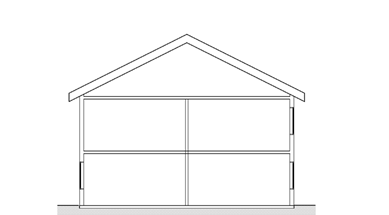
|
Building Geometry
A building’s form is one of the primary factors that influence energy consumption. This includes its area, volume, layout, orientation, glazed areas, and shading – and is captured in an energy simulation using an Energy Analysis Model (EAM). |
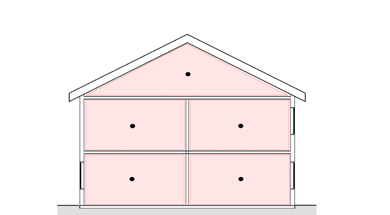
|
Spaces & Thermal Comfort
These spaces exchange heat with the outside environment and with each other (the dotted lines). An EAM that has discrete spaces that represent the air within a building (the pink boxes). A series of thermal comfort points are placed within these spaces (the dots). |
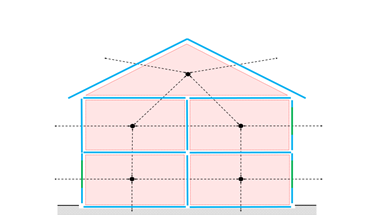
|
Surfaces & Heat Transfer
These spaces exchange heat with the outside environment and with each other (the dotted lines). This heat transfer happens across surfaces of the model, abstracted from the geometry and representing the walls, roof, floors, and windows of the building (blue and green lines). |
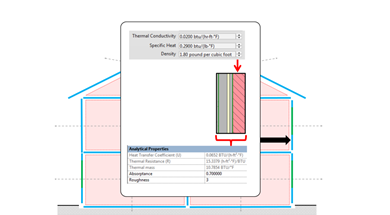
|
Material Properties
The behavior of the heat transfer across these surfaces is dictated by the materials (concrete, glass, insulation, etc). These affect the heating and cooling energy required to maintain comfort. Thermal properties considered include density, specific heat capacity, and conductivity. The properties of each surface account for the combined thermal properties of the layered building constructions. |
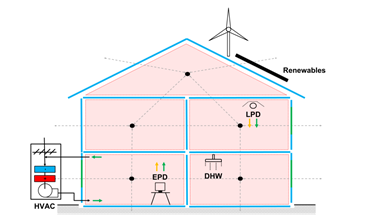
|
Building Systems
A building’s systems consume and produce energy to meet the building’s and occupants’ needs.These include:
|
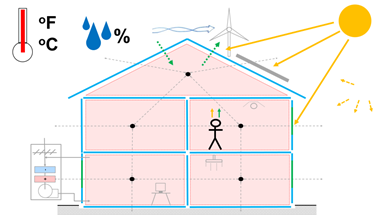
|
Loads from Occupancy & Exterior Conditions
So far we’ve built-up a model that represents the building’s spaces, surfaces, and systems. The other half of the modeling needed for energy simulation is the dynamic loads from people inside the building (based on building program assumptions) and the environmental conditions outside the building (based on climate data). How well will the building perform under these loads?These factors include:
|
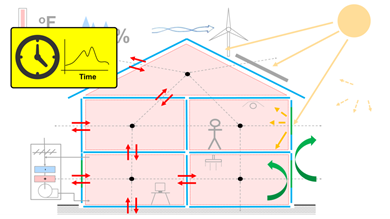
|
Heat Transfer Modeled Over Time
Now that we know both the building’s properties and the loads it will be subjected to over time, we can simulate heat transfer over time (usually an entire year, in hourly increments).This includes:
|

|
Energy Use and Cost Predictions
Finally, based on all that we’ve modeled and simulated, we can extract energy use and cost predictions. These energy use values are broken down by energy source (electricity, fuel) and also by end use (lighting, HVAC, etc). This can be translated to cost by multiplying predicted use with the predicted utility rates of each energy source. |